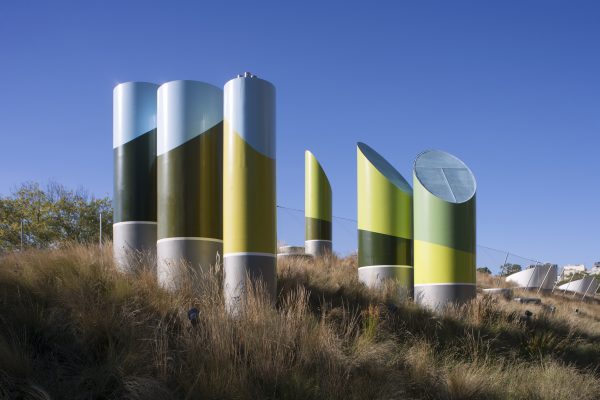Artwork Description
This bronze statue depicts Spanish explorer, Pedro Fernandez de Quiros standing approximately two metres tall on sandstone plinth. The sculpture is located in the Plaza Iberoamericana on Chalmers Street. It is one of a series of busts of famous Latin American heroes on display in the plaza commemorating the contribution of Spanish and Portuguese speaking people to the history of Australia.
SUBJECT
Pedro Fernandez de Quiros was born in 1565 in Evora, Portugal and entered the service of the Spanish King as a youth. He journeyed from Acapulco to Manila several times. In 1595 he was appointed pilot in the expedition of Alvaro de Mendana, whose previous voyages are considered to be the original exploration of the Solomon Islands. The fleet left El Callao, Peru in April 1595 and ‘discovered’ the Marquesa Islands and Santa Cruz Island on their way to establish a permanent colony in Manila in Solomon Islands. Mendana de Neyra died on the voyage and Quiros assumed command bringing the ships safely into Port Manilla.
The Spanish crown provided money to enable Quiros to set out on another expedition to “discover” the ‘Terra Australia Incognita’. With the blessing of Pope Clement VIII, Quiros left El Callao, Peru in December 1605. On 1 May 1606 Quiros landed on and named what he thought was the great Southern land, which he claimed in the name of the King of Spain, Phillip III of the house of Austria. He named this land ‘ Australia del Espiritu Santo’ (Vanuatu). He established a settlement before realising he had instead reached a small island. As storm on the 11 June forced the ships to separate.
Torres, the commander of the second vessel, came back through the Torres’ Strait and sighted the continent now known as Australia. Quiros came back through Mexico and the glossy account of this discovery, through a leak in the Spanish bureaucracy, was printed in all European languages. He was employed as a cartographer in Madrid and was then put in charge of a second expedition to Australia. He died in Panama in 1615 on his way back to the South Pacific.
COMMISSION
King Juan Carlos I of Spain and Queen Sophia presented the statue of Quiros to the City of Sydney at a function in the Town Hall on 17 June 1988. The statue was unveiled at the official opening of the Plaza Iberoamericana on Chalmers Street in Surry Hills on 4 February 1989.
INSCRIPTIONS
An inscriptions reads: “Pedro Fernandez de Quiros / (1565-1615) / This great Portuguese born explorer in the service of / Spain made important discoveries in the Pacific. / Quiros gave the name of Australia del Espiritu Santo / to the great southern continent and died in Panama / while on his way back to the South Pacific to / establish a settlement in the new lands. / The name modified to simply “Australia” is the proud / name of the nation today.”
REFERENCES
Louella McCarthy and Paul Ashton (eds.), Sydney Open Museum Historical Survey, Sydney City Council, 1994, item 21, pp 139-162, liv-lx










